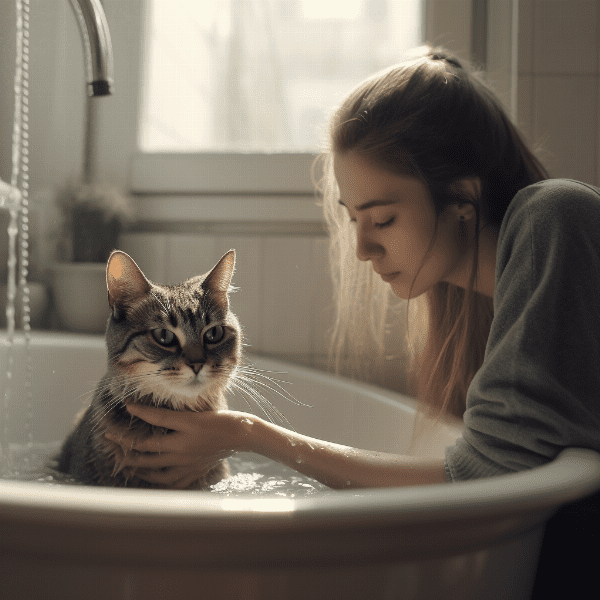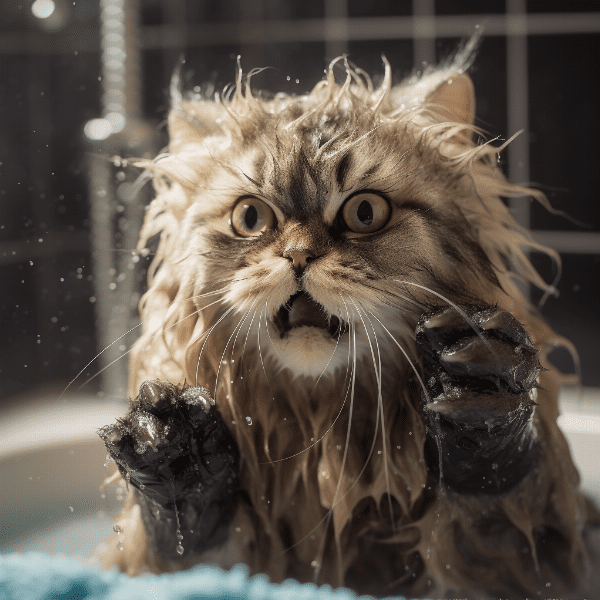Table of Contents
- Introduction: Understanding the Need for Bathing Cats
- Cats are Self-Cleaning: Myth or Reality?
- When to Bathe Your Cat: Signs and Symptoms to Look Out for
- The Dos and Don’ts of Bathing Your Cat
- Best Practices for a Successful Cat Bathing Session
- Alternatives to Traditional Cat Bathing Techniques
- Cat Bathing Products: Choosing the Right Shampoo and Conditioner
- How Frequently Should You Bathe Your Cat?
- Conclusion: Final Thoughts on Cat Bathing
Introduction: Understanding the Need for Bathing Cats
Cats are known for their fastidious grooming habits, spending up to several hours a day licking and cleaning themselves. With such impeccable self-maintenance, it’s easy to assume that cats don’t require regular baths. However, the question of whether or not cats need baths is one that many pet owners have pondered over the years.
While it’s true that cats are generally able to keep themselves clean, there are situations where a bath may be necessary. For example, cats with long hair or those that have difficulty grooming themselves due to age or medical conditions may require additional assistance to maintain their cleanliness. Additionally, some cats may simply enjoy the sensation of being bathed, finding it a relaxing experience.
In this article, we’ll explore the topic of cat bathing in more detail, looking at the benefits of bathing your feline friend and when it may be necessary to do so. We’ll also provide tips and techniques for making the experience as pleasant as possible for both you and your cat. So, let’s dive in!
The Importance of Cat Bathing
Bathing your cat not only helps to keep them clean and fresh-smelling, but it can also help to prevent a range of health problems. Dirt, debris, and other substances that accumulate on your cat’s fur can cause skin irritation and infection if left unattended. Additionally, regular bathing can help to reduce the risk of flea and tick infestations, as these parasites are less likely to take up residence on a clean and well-groomed cat.
Factors to Consider
Before you decide whether or not to bathe your cat, there are several factors to consider. Firstly, it’s important to take into account your cat’s age, health, and personality. While some cats may enjoy being bathed, others may find the experience stressful or uncomfortable. Additionally, cats with certain medical conditions may require special bathing techniques or products.
Another factor to consider is your cat’s living environment. Indoor cats that spend the majority of their time in a clean and controlled environment may require less frequent bathing than outdoor cats that are exposed to dirt, dust, and other contaminants.
In the next section, we’ll take a closer look at the myth of cats being self-cleaning and examine the reality behind this commonly held belief.
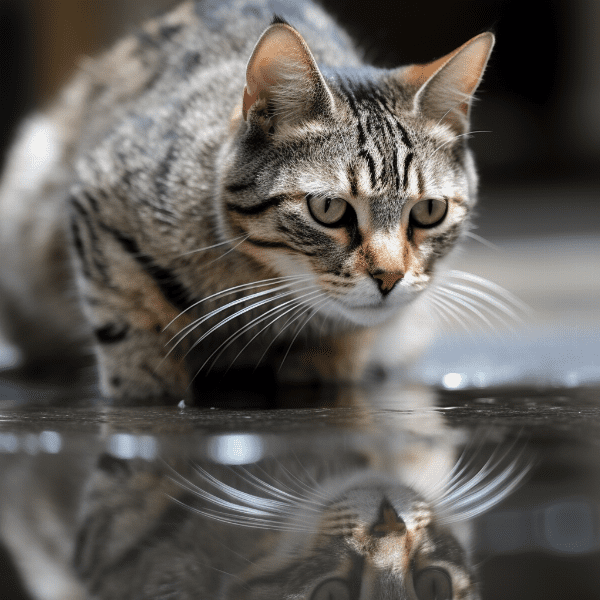
Cats are Self-Cleaning: Myth or Reality?
It’s a commonly held belief that cats are self-cleaning creatures and therefore don’t require regular baths. While it’s true that cats are fastidious groomers and spend a significant amount of time licking and cleaning themselves, the idea that they are completely self-sufficient in terms of hygiene is a myth.
The Reality Behind the Myth
While cats are capable of keeping themselves relatively clean, there are several factors that can make regular bathing necessary. For example, cats with long hair may struggle to effectively groom themselves, leading to matting and tangling of the fur. Additionally, cats that are overweight or have mobility issues may have difficulty reaching certain parts of their body for grooming purposes.
Furthermore, while cats’ saliva does contain enzymes that can help to break down dirt and debris on their fur, this doesn’t necessarily mean that they are completely clean. In fact, a cat’s tongue can actually leave behind allergens, bacteria, and other particles that can cause health problems if left unchecked.
The Importance of Regular Grooming
While regular bathing may not be necessary for all cats, it’s important to maintain a consistent grooming routine to keep your feline friend healthy and happy. This includes brushing your cat’s fur regularly to prevent matting and tangling, as well as trimming their nails to prevent overgrowth.
In addition to physical grooming, it’s also important to monitor your cat’s overall health and well-being. This includes keeping an eye out for signs of skin irritation or infection, as well as checking for fleas and ticks regularly. By staying on top of your cat’s grooming needs, you can help to prevent a range of health problems and ensure that your feline friend stays comfortable and happy.
In the next section, we’ll discuss when it may be necessary to give your cat a bath and the signs to look out for.
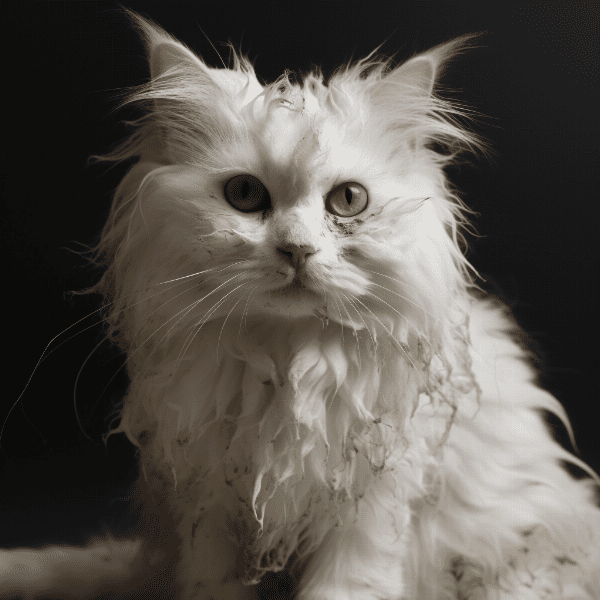
When to Bathe Your Cat: Signs and Symptoms to Look Out for
While cats are generally able to keep themselves clean, there are situations where a bath may be necessary. However, it’s important to only bathe your cat when it’s absolutely necessary, as excessive bathing can strip their fur of its natural oils and cause skin irritation. So, how do you know when it’s time to give your feline friend a bath?
Signs That Your Cat Needs a Bath
The most obvious sign that your cat needs a bath is if they have gotten into something particularly messy, such as mud or paint. In these cases, it’s important to clean them up as soon as possible to prevent the substance from drying on their fur and causing skin irritation.
Another sign that your cat may need a bath is if they have developed a skin condition or infection that requires treatment. This may include conditions such as ringworm, which can cause redness, scaling, and hair loss on your cat’s skin. If your cat has been diagnosed with a skin condition, your veterinarian may recommend a specific bathing regimen to help manage the symptoms.
Bathing Frequency
While some cats may require regular bathing due to medical conditions or their living environment, most cats only need to be bathed a few times a year. Over-bathing can cause dryness and irritation of the skin, so it’s important to only bathe your cat when it’s absolutely necessary.
It’s also important to choose the right shampoo and conditioner for your cat’s specific needs. Avoid using human shampoos and opt for products specifically designed for cats, as these are formulated to be gentle on their skin and won’t cause irritation.
In the next section, we’ll discuss the dos and don’ts of bathing your cat, so you can ensure a safe and comfortable experience for both you and your feline friend.
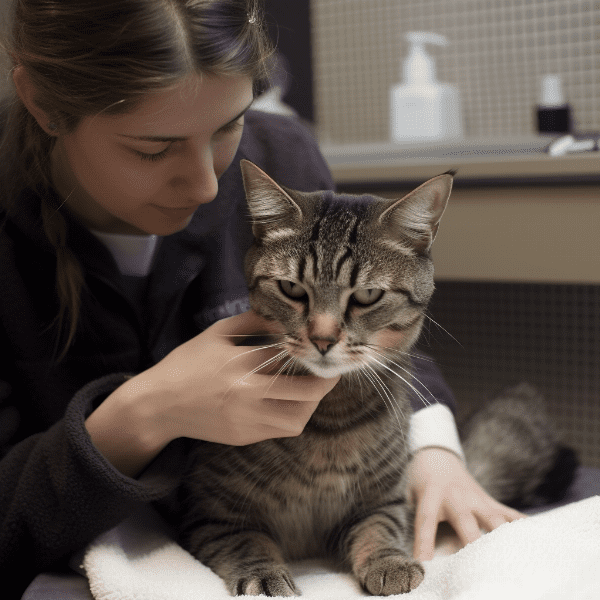
The Dos and Don’ts of Bathing Your Cat
Do: Prepare the Bathing Area
Before you begin, make sure you have everything you need within reach. This includes a cat-specific shampoo and conditioner, towels, and a non-slip surface for your cat to stand on. Fill the tub or sink with a few inches of warm (not hot) water, and place your cat gently into the water.
Don’t: Use a Showerhead or Hose
Cats are sensitive to loud noises and sudden movements, so using a showerhead or hose to wet them down can be stressful and uncomfortable. Instead, use a cup or pitcher to pour water over your cat’s body, avoiding the head and face.
Do: Use a Gentle Touch
When applying shampoo and conditioner, use a gentle touch and avoid getting any product in your cat’s eyes or ears. Massage the product into your cat’s fur, working from the neck down to the tail, and rinse thoroughly with warm water.
Don’t: Force Your Cat
If your cat becomes agitated or stressed during the bath, don’t force them to continue. Instead, take a break and try again later, or opt for alternative grooming techniques such as dry shampoo or wipes.
Do: Reward Your Cat
After the bath, wrap your cat in a warm towel and offer them treats or praise to help reinforce positive associations with the experience.
By following these dos and don’ts, you can help to make bath time a positive and stress-free experience for both you and your cat.
In the next section, we’ll explore some best practices for a successful cat bathing session, including tips for managing anxiety and stress.

Best Practices for a Successful Cat Bathing Session
Bathing a cat can be a challenging task, but with a few best practices in mind, you can help to make the experience as successful as possible. Here are some tips for managing anxiety and stress during bath time:
Manage Your Cat’s Anxiety
Cats are sensitive creatures, and the sound and sensation of water can be overwhelming for some. To help manage your cat’s anxiety, start by playing calming music or white noise in the room where you’ll be bathing them. You can also try using pheromone sprays or diffusers to create a sense of calm and relaxation.
Use Treats and Positive Reinforcement
Offering treats or positive reinforcement can help to create a positive association with bath time. Reward your cat with treats or verbal praise throughout the bathing process, and be sure to offer plenty of cuddles and snuggles once the bath is over.
Be Prepared
Before you begin, make sure you have everything you need within reach, including towels, shampoo, and conditioner. This will help to minimize the amount of time your cat spends in the water, reducing the risk of stress and anxiety.
Work Quickly and Efficiently
Once your cat is in the water, work quickly and efficiently to minimize their time in the tub. Use a gentle touch when applying shampoo and conditioner, and rinse thoroughly to avoid leaving any residue on your cat’s fur.
Take Breaks If Needed
If your cat becomes agitated or stressed, don’t hesitate to take a break and try again later. Bathing a cat should be a gradual process, and it’s important to respect your cat’s limits and boundaries.
By following these best practices, you can help to ensure a successful cat bathing session and minimize stress and anxiety for both you and your feline friend.
In the next section, we’ll explore some alternative grooming techniques for cats, for those who may prefer to avoid traditional bathing methods.
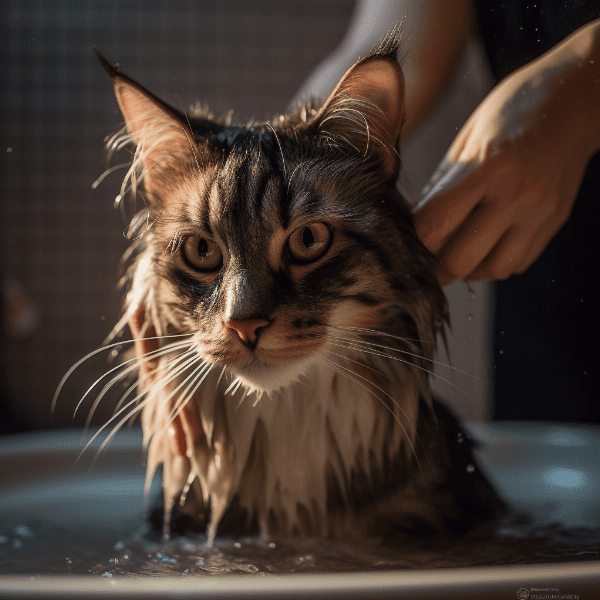
Alternatives to Traditional Cat Bathing Techniques
For some cats, traditional bathing methods may not be the best option. Whether due to anxiety, medical conditions, or simply personal preference, there are alternative grooming techniques that can help to keep your cat clean and healthy. Here are some options to consider:
Dry Shampoo
Dry shampoo is a powder or foam that can be applied to your cat’s fur to help absorb dirt and oils. It’s a great option for cats who are afraid of water or who have mobility issues that make bathing difficult. Simply apply the dry shampoo to your cat’s fur, massage it in with your hands, and then brush it out.
Wet Wipes
Wet wipes are another option for cats who prefer to avoid traditional bathing. There are a variety of pet-specific wipes available that are designed to clean and freshen your cat’s fur without the need for water. Simply wipe your cat down with the wet wipe, focusing on areas that are prone to getting dirty or smelly.
Waterless Shampoo
Waterless shampoo is a spray-on foam or liquid that can be used to clean your cat’s fur without the need for water. It’s a great option for cats who are anxious or scared of water, as it allows you to clean their fur without getting them wet. Simply apply the waterless shampoo to your cat’s fur, massage it in with your hands, and then wipe it off with a towel.
Grooming Mitts
Grooming mitts are gloves or mitts that are designed to remove dirt, debris, and loose fur from your cat’s coat. They can be used in place of traditional bathing methods or as a supplement to your cat’s grooming routine. Simply put on the mitt and use gentle strokes to remove any dirt or debris from your cat’s fur.
By exploring these alternative grooming techniques, you can find the best solution for your cat’s individual needs and preferences.
In the next section, we’ll discuss some of the best products to use when bathing your cat, including shampoos, conditioners, and grooming tools.

Cat Bathing Products: Choosing the Right Shampoo and Conditioner
When it comes to bathing your cat, choosing the right products is key to ensuring a safe and effective experience. Here are some tips for selecting the best shampoo and conditioner for your feline friend:
Look for Cat-Specific Products
Avoid using human shampoo or conditioner on your cat, as these products can be too harsh and may cause skin irritation or dryness. Instead, opt for products specifically designed for cats. Look for products that are pH-balanced and free of harsh chemicals, fragrances, and dyes.
Consider Your Cat’s Needs
When selecting a shampoo and conditioner, consider your cat’s specific needs. For example, if your cat has sensitive skin, look for products that are hypoallergenic or designed for sensitive skin. If your cat has a specific skin condition or medical issue, talk to your veterinarian about recommended products.
Read Labels Carefully
When selecting a product, be sure to read the label carefully to ensure that it’s safe for use on cats. Look for products that are free of ingredients that are known to be harmful to cats, such as tea tree oil, which can be toxic if ingested.
Choose a Gentle Brush
When grooming your cat, it’s important to use a brush that is gentle on their skin and fur. Look for a brush with soft bristles that won’t cause irritation or scratching. Avoid using brushes with metal bristles, as these can be too harsh and may cause discomfort.
By choosing the right shampoo, conditioner, and grooming tools, you can help to ensure a safe and effective bathing experience for your cat.
In the next section, we’ll discuss how frequently you should bathe your cat and factors that can influence bathing frequency.
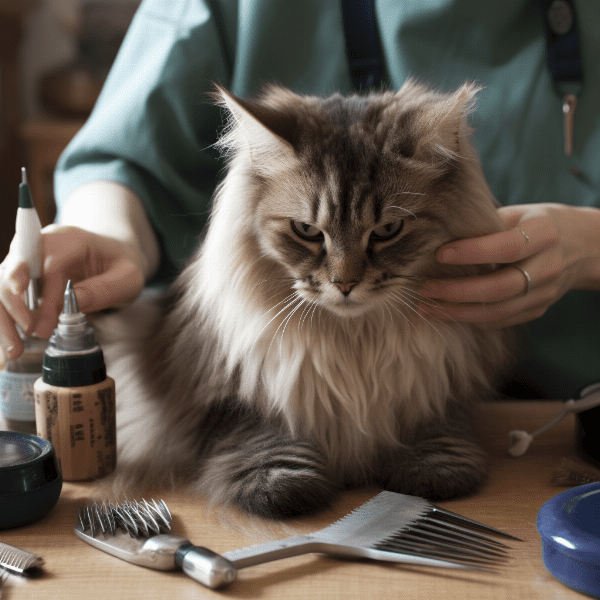
How Frequently Should You Bathe Your Cat?
Determining how frequently to bathe your cat can depend on a variety of factors, including their breed, lifestyle, and overall health. Here are some general guidelines to follow:
Regular Brushing
Regular brushing can help to keep your cat’s fur clean and free of tangles and matting. For most cats, daily brushing is sufficient to keep their coat in good condition.
Long-Haired Cats
Long-haired cats may require more frequent bathing than their short-haired counterparts, as their fur is more prone to matting and tangling. However, it’s important to avoid over-bathing, as this can cause dryness and irritation of the skin.
Senior Cats
As cats age, they may become less flexible and have difficulty reaching certain parts of their body for grooming purposes. In these cases, bathing may be necessary to help keep them clean and prevent skin irritation.
By considering your cat’s individual needs and lifestyle, you can determine the best bathing frequency for them. In general, most cats only require infrequent baths, and daily brushing is sufficient to maintain their coat.
In the next section, we’ll recap some of the key points to keep in mind when bathing your cat, and offer some final tips for a successful experience.
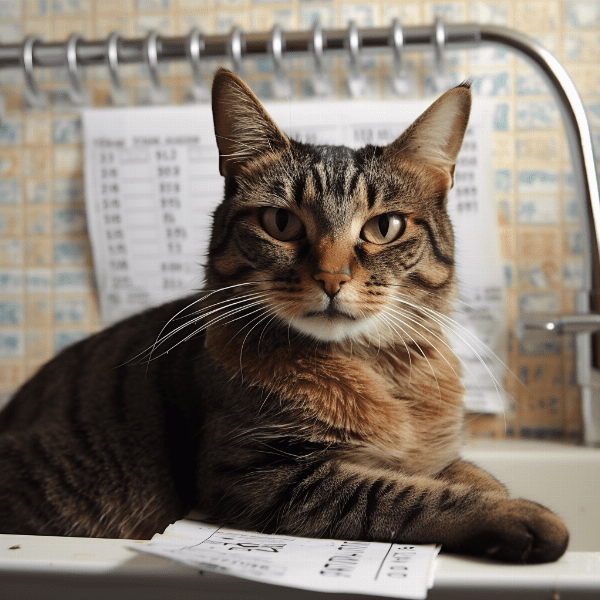
Conclusion: Final Thoughts on Cat Bathing
Bathing your cat can be a challenging task, but with the right approach, it can be a safe and effective way to keep your feline friend clean and healthy. Here are some key takeaways to keep in mind:
Cats are Self-Cleaning
For the most part, cats are able to keep themselves clean and don’t require frequent baths. However, there are situations where a bath may be necessary, such as if your cat has gotten into something messy or if they have a skin condition that requires treatment.
Choose the Right Products
When bathing your cat, it’s important to choose the right products, including shampoo, conditioner, and grooming tools. Look for products that are specifically designed for cats and free of harsh chemicals and fragrances.
Follow Best Practices
To ensure a successful bathing experience, follow best practices such as preparing the bathing area, working quickly and efficiently, and rewarding your cat with treats and praise. Avoid using loud or sudden movements that may startle your cat, and be prepared to take breaks if needed.
Consider Alternatives
If traditional bathing methods aren’t suitable for your cat, consider alternatives such as dry shampoo, wet wipes, or waterless shampoo. These options can help to keep your cat clean without the need for water.
By keeping these tips in mind, you can help to ensure a successful and stress-free bathing experience for both you and your cat. Remember to always be gentle and patient, and don’t hesitate to seek the advice of your veterinarian if you have any questions or concerns.


